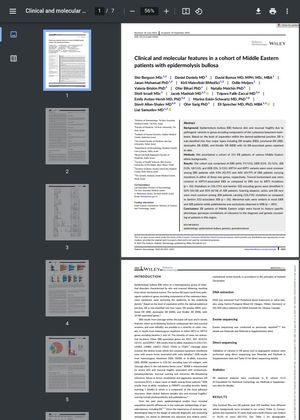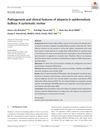Clinical and Molecular Features in a Cohort of Middle Eastern Patients With Epidermolysis Bullosa
October 2023
in “
Pediatric dermatology
”

TLDR Middle Eastern patients with epidermolysis bullosa show specific genetic mutations linked to different types of the disease.
The study analyzed 151 Middle Eastern patients with epidermolysis bullosa (EB) to understand the spectrum and prevalence of EB-associated pathogenic variants and genotype-phenotype correlations. EB simplex (EBS) was the most common type (64.3%), followed by dystrophic EB (DEB, 20.5%), junctional EB (JEB, 11.9%), and Kindler EB (KEB, 3.3%). Key findings included high rates of consanguinity (33 cases) and a family history in 54.3% of cases. Clinical features varied by EB type, with notable associations such as facial involvement in JEB and KEB, oral mucosa involvement in DEB, and different forms of alopecia linked to JEB and KEB. Nail abnormalities were prevalent in DEB and JEB, and poikiloderma was exclusive to KEB. The study underscores the importance of molecular epidemiological data for diagnostic and counseling strategies in EB.
